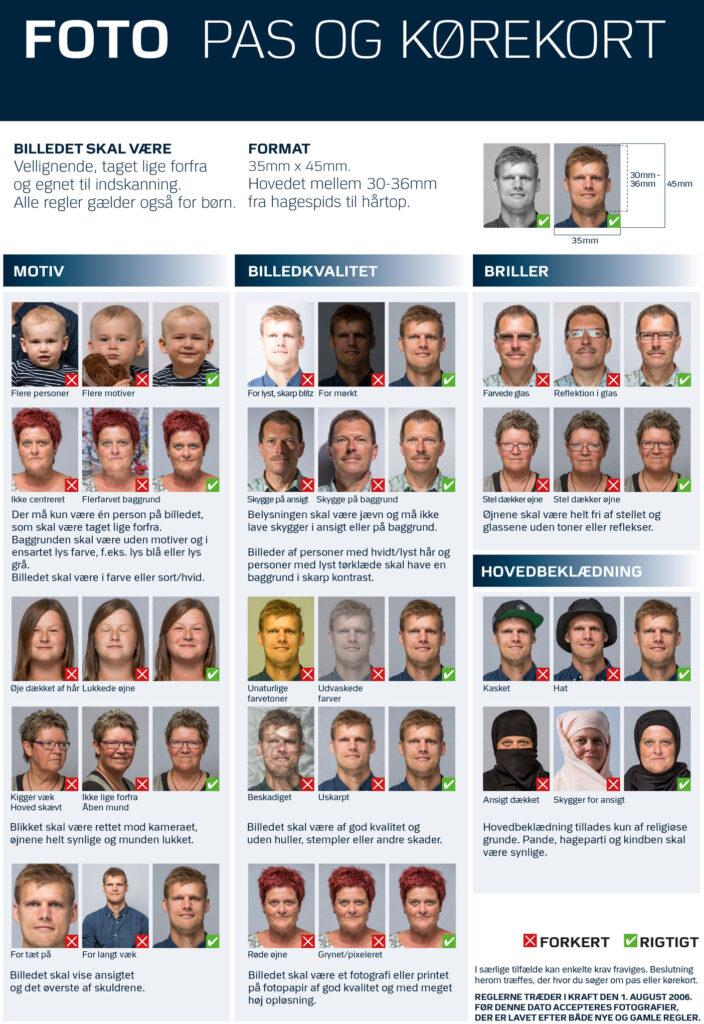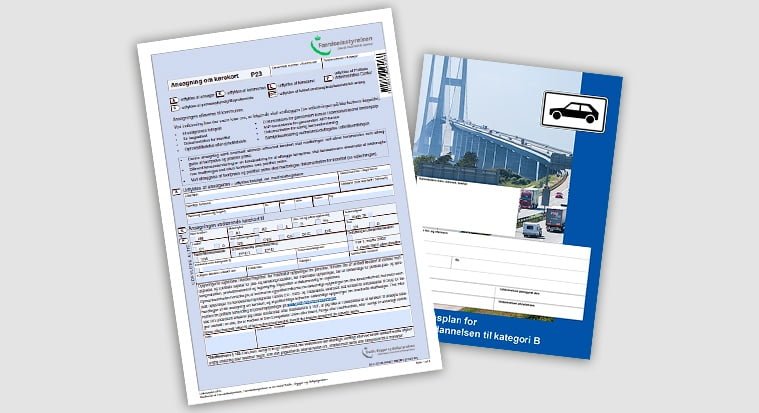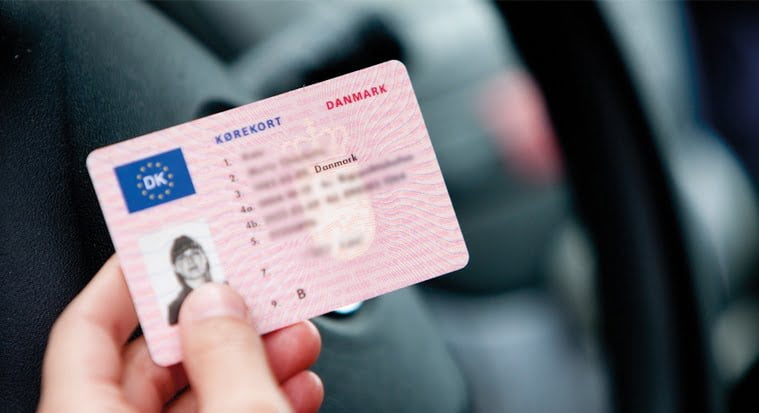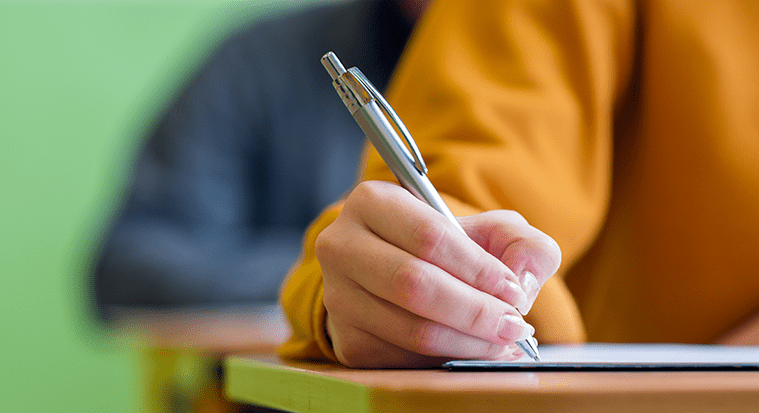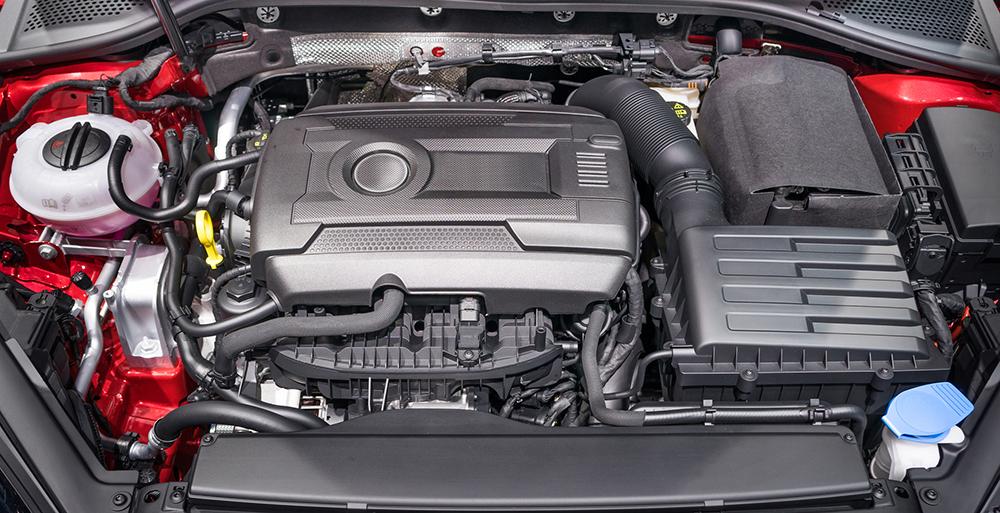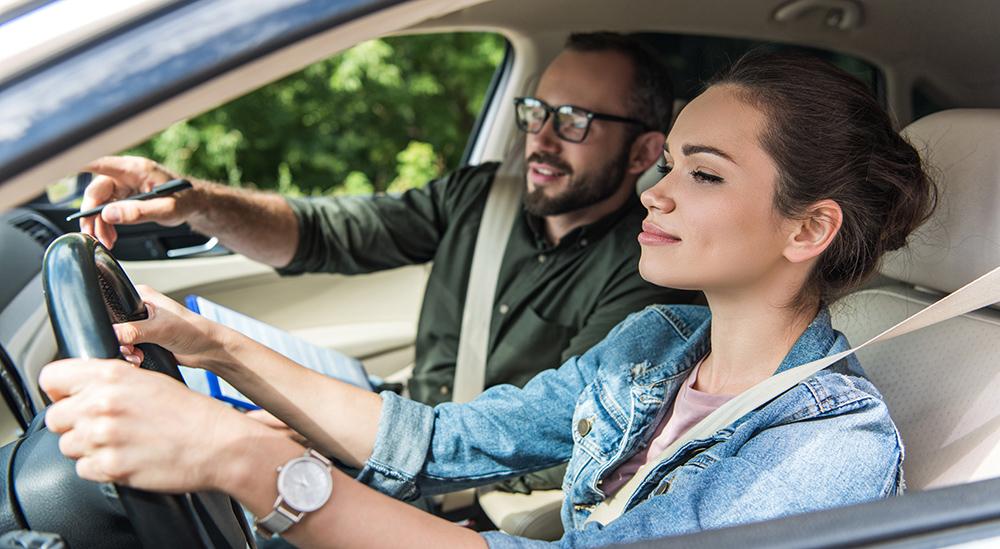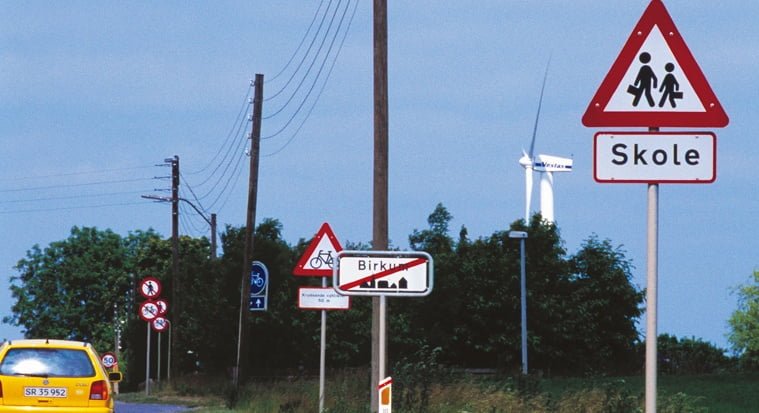Passenger car
Driving school
theory book
to category B
Sections 10.1 - 10.3: Preparation for the driving test
The final word on the road
Conditions for obtaining a driving licence
Driving lessons
§ If this is the first time you are taking a category B licence, you must receive training from a driving instructor who is authorised for this category. The training must fulfil the requirements set out in the Danish Road Safety Agency's curriculum for category B and include both theoretical and practical training. You'll also need to have completed a road safety-related first aid course, and the course certificate must be handed in of the driving licence application must not be older than 1 year. The syllabus can be found on the Danish Road Safety Agency's website www.fstyr.dk and on www.retsinfo.dk.
When driving on public roads, an approved driving instructor must be at your side by you. The driving instructor is considered to be the driver of the car. When you perform drills on the closed practice area and on the driving training centre, must you're alone in the car.
Lesson plan
§ A lesson plan must be used in two copies during lessons. According to the provisions of the Driving Licence Order, you must have one copy and your driving instructor the other. The lesson plan must describe the lessons you receive in the theory classroom and in the school car. At the end of each lesson, both you and your instructor must sign the instructor's copy of the lesson plan to confirm that the lesson has been completed.
§ Preparation for the driving test
- Driving licences are issued by the police after passing a driving test.
- The driving test is taken before the police examiner. For persons employed under the Ministry of Defence
and for emergency services personnel, the driving test is taken before special driving judges.
- Applying for a driving test is done by completing and signing an approved application form and
hand it in to the municipality.
- Once the training has been completed, the driving instructor must sign the
confirm on the application form that the applicant has received training in accordance with
with the curriculum.
- The application form must be attached:
a) Medical certificate with information on the applicant's health and state of health.
b) Health card or similar documentation for social security number.
c) Well-looking photograph (portrait without headgear) in size 35 x 45 mm.
Once you have received theoretical and practical training up to "Manoeuvres on a driving test facility" (or section 9), you can be nominated for the driving test. You fill in and sign a special, authorised application form, confirming that you have received training that meets the requirements set out in the syllabus. You also confirm that the initial practical training has taken place in a closed practice area.
The application form is submitted to the municipality.
If you do not already have a driving licence, the following must be attached to the application form:
- Medical certificate with information about your health and medical condition and a 35 x 45 mm, unstamped, clear photograph with a doctor's signature on the back.
- Course certificate for a completed course in road traffic first aid.
- Documentation for your social security number in the form of a valid passport, original baptismal, name or birth certificate, health card or other suitable ID, and photo ID.
- Parental consent form if you are under 18 years of age.
Driving licence category B and driving licence
Driving licence category B entitles you to drive these vehicles:
- Passenger cars and vans that do not exceed 3,500kg gross vehicle weight. Passenger cars may have a maximum of 8 seats in addition to the driver's seat
- Cars as above with an attached trailer of no more than 750kg.
- Cars as above with a trailer weighing more than 750kg (the total gross vehicle weight of the car/trailer must not exceed 3,500kg)
- A combination of vehicles consisting of a passenger car or van and a trailer with a permissible total weight of more than 750 kg. The total permissible gross vehicle weight of the combination must not exceed 4,250 kg. If the total permissible gross weight of the combination of vehicles exceeds 3,500 kg, the combination of vehicles may only be driven when special driving training and a practical test have been completed in accordance with the Executive Order on Driving Licences.
- 3-wheeled motorbike and 3-wheeled car with and without trailer, (not a two-wheeled motorbike or motorbike with sidecar).
Four-wheeled motorbike (ATV), tractor, power tool, small and large moped.
The driving test itself
Requirements for the driving test
§ During the driving test, the examiner will assess whether you have achieved the knowledge and skills required by the learning objectives in the syllabus.
The driving test is both a theory test and a practical test. You must pass the theory test before you can sit the practical test. For both tests, you must bring your driving licence application and the driving instructor's lesson plan with signatures. You cannot take the driving test unless you have completed the training in accordance with the provisions of the Driving Licence Order. You can take the theory test once you have received instruction in section 1 of the lesson plan. Sections 1 to 8 inclusive, as well as relevant sections from section 10 of the syllabus. You can only take the practical test once you have received instruction in all sections of the syllabus.
The theory test
The theory test is written and usually lasts about half an hour. During the test, you will be shown a randomly selected test.
Each image is accompanied by a series of questions that you must answer by ticking off your answers in an accompanying form.
Students who are unable to take the written test due to special, documented circumstances can take a special theory test where the image series and tick sheets are also used.
The test room closes at the agreed time. If you arrive late and the test has started, you will have to pay to reschedule the test.
Before the test, you will be counselled about the test and its conditions. Among other things, you will be told how to fill in the tick sheet and that the use of aids is not permitted.
During the test, only the invigilator and the students have access to the test room.
For the theory test you need to bring
- Application that is completed and signed.
- Driving instructor's lesson plan completed and signed.
- Special ID, e.g. EU driving licence, valid passport (issued after 1 Oct. 1949) or original baptism, name or birth certificate, health card or other suitable ID, and photo ID.
- The test is graded according to a marking guide and you will receive your result immediately. If you've made mistakes, you'll be told which topics you've made mistakes on.
The practical test
The driving time must not be less than 25 minutes. During this time, the examiner must have time to assess your behaviour in traffic. In addition to the driving time, time must be spent on checking your identity, informing you about how your road test went, checking the vehicle's equipment and evaluating the test process, among other things. If necessary, the test period can be extended or cancelled if your driving skills are not good enough.
The test is conducted in an approved school car provided by you (your driving instructor). Next to you is the examiner. If you don't mind, the driving instructor can observe the test from the back seat.
As part of the test centre's quality assurance of the practical test, an additional test expert may attend the test after prior notification of the driving instructor.
During the test, you are considered the driver of the car and therefore the responsibility and obligations are yours. The examiner ensures the safety of the test and that you are not forced into abnormal traffic situations or forced to break the rules of the road. If it is necessary to intervene and use the car's controls for safety reasons or to avoid a collision, the examiner must do so.
If you make a few minor mistakes during the practical test, you can still pass. It is your driving as a whole that will be assessed.
The inspection of the vehicle's statutory equipment is part of the practical test. During the check, you must be able to examine and decide, without the use of tools, whether the parts you are examining fulfil the legal requirements. You must also be able to explain how the inspection is carried out.
The manoeuvres that you have practised in the closed practice area and on the technical driving facility must be performed as a natural part of driving during the test. Reversing and reversing around corners can also be included. And if it does, you can only be required to perform the manoeuvre with some precision. Driving in figure 8s and forward and backward slalom may not be required.
After the test, you will immediately know if you have passed. Students who have not passed must be told which skill requirements in the curriculum have not been met.
For the practical test, you must bring
- Application that is completed and signed.
- Any previously issued driving licence.
- Special ID, e.g. EU driving licence, valid passport (issued after 1 Oct. 1949) or original baptism, name or birth certificate, health card or other suitable ID, and photo ID.
- Driving instructor's lesson plan completed and signed.
- The exam is otherwise assessed according to the Guidelines for Examiners.
Legal regulations on driving licences
Validity
Your driving licence is issued with a validity period of 15 years. In special cases, it is issued with a shorter validity and under certain conditions.
While driving, you must always carry your licence with you and show it to the police upon request. If your licence is lost or damaged, you must contact your local authority to get a new one.
Revocation and reinstatement
If the police have reason to believe that you no longer meet the conditions for holding a driving licence, they can revoke it or call you in for a driving test.
If you have already been disqualified from driving, you can only get your licence back by passing a driving test. If your driving licence has been suspended due to drunk driving, you must complete a course on alcohol, drugs and traffic (ANT course) prior to the driving test.
First-time licence holders (i.e. holders of a category A or B licence who have not yet held a licence for 3 years) must complete special driving instruction before taking the driving test when the disqualification is due to driving errors. If the disqualification is solely due to drink-driving, only a course in alcohol, drugs and traffic (ANT course) must be completed before taking the driving test. The special driving lessons must be completed with an approved driving instructor and must include at least certain lessons in a theory classroom and practical driving lessons.
What lies ahead?
The best advice you can get is simple: always make sure you're sufficiently orientated, never take chances - and then remember how dangerous excessive speed can be!
The compulsory training you've now completed is the prerequisite for becoming a good driver. When you soon get out on the road on your own, you'll not only need to use what you've learnt in driving school, you'll also need to build on your skills and gain experience. Your understanding of the road will improve as you expand your experience of risks and hazards.
When you're "in the driver's seat", you may get a false sense of security, leading to a risky driving style. You should be considerate of other road users, but don't trust them blindly. It is up to you and you alone to assess the traffic situation and drive at a speed that allows you to stop at all times.
It's no coincidence that the Danish Council for Safe Traffic repeatedly organises campaigns to encourage drivers to slow down and think more carefully in traffic. Keep an eye out for these campaigns, but also for changes in traffic laws and news about traffic in general. You can also visit the websites referred to in the introduction.
Your driving licence is not your property, but a driving permit that you must comply with at all times.
You have a lot of responsibility as a driver, but you'll also experience a whole new level of freedom with your newly acquired licence - watch out for it.
Cut the map
A driving disqualification applies to serious traffic offences that do not in themselves lead to a driving licence suspension. A licence suspension means that in addition to the fine, you will also receive a suspension if you endanger others.
3 points within 3 years will result in a conditional suspension of your driving licence. Each suspension is valid for 3 years from the date of the offence. After that, it will be cancelled.
For new drivers who have obtained their licence within the last 3 years, the suspension is stricter. Only 2 points within 3 years will result in a driving ban. This means that your licence must be surrendered and you must complete 8 theory lessons and 8 driving lessons with a driving instructor and pass a regular theory and driving test to get your licence back.
For example, you'll get a penalty if you
- Exceeding the speed limit by more than 30%
- Driving with too short a distance to the vehicle in front
- Driving illegally in the emergency lane
- Do not buckle up children under 15 years old in the car
- Do not restrain passengers under 135 cm in the car
- Running a red light
- Breaking the rules of the right of way
- Not stopping at a stop sign (B13)
- Violates overtaking and no overtaking rules
- Crossing the barrier lines when overtaking
- Increases speed when you are being overtaken
- Overtaking at a pedestrian crossing
- Driving against the direction of traffic
- Driving recklessly slalom and overtaking in heavy traffic
- Changes traffic direction and location to the danger/undue inconvenience of others
- Going left on a slip road
- Race or race on the road
- Driving over railway tracks if signalled to stop
- Do not ensure that passengers between 5 and 15 years of age wear a crash helmet on a motorbike.
Card suspension applies to all motor vehicles for which a driving licence is required.
Good luck to you!
